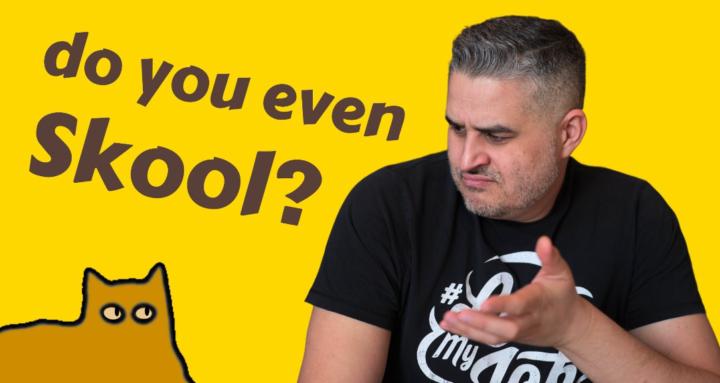Jul 29 • 💎 Promote by Educating
✴️ #2 I watched this whole ad (from FortNine)
TLDR:
FortNine made a brilliant marketing video that doesn't feel like marketing at all. Instead of pushing their leather key wrap, they spent 5 minutes explaining the fascinating science of why leather beats all synthetic materials - then Ryan literally got dragged on asphalt by a motorcycle while wearing each material to prove his point. The synthetic alternatives got destroyed, but the leather held up.
The genius move: They only mention their product at the very end, after you've watched real crash testing and learned genuine materials science. By then, buying the key wrap feels like the logical conclusion, not a sales pitch. Result? The product sold out.
The takeaway for other companies: Lead with education and curiosity, respect your audience's intelligence, and be willing to put your money (and skin) where your mouth is. People share educational content, not ads.
------------------------------------------------------
(Sponsored by me 😂 - you can support this community by using this affiliate link when starting your free 14-day Skool Trial. Thank you!)
So I just watched this incredible video from FortNine, and I had to tell you about it because it's basically a masterclass in how to sell stuff without making people want to punch their screen.
You know how most motorcycle gear companies just scream about their products being "THE BEST" and "MILITARY GRADE" and all that nonsense? Well, Ryan from FortNine took a completely different approach, and it's genius.
⚫ The Setup That Actually Makes You Care
Instead of starting with "Hey, buy our leather key wrap," the guy opens with this fascinating question: Why can't 300 years of industrial innovation beat a piece of cow skin? Like, seriously, we've invented space-age materials, but leather is still the king of motorcycle gear. That immediately got me hooked because I genuinely wanted to know the answer.
This is so much smarter than the usual "Our product is amazing because we say so" approach. He made me curious before he tried to sell me anything.
⚫ The Science Lesson You Actually Want to Watch
Here's where it gets really good. Ryan spends almost 5 minutes breaking down the molecular structure of leather. And I mean really breaking it down - amino acid sequences, triple helixes, fibral bundles, the whole nine yards.
But here's the thing - it doesn't feel like homework. It feels like your smart friend explaining something cool they just learned. He talks about how leather has this incredible hierarchical structure where:
- The bottom layer is super tough and tear-resistant
- The top layer is permeable so you don't turn into a sweaty mess
- It's all one continuous material that just knows how to be different things at different depths
- The fibers weave together randomly and organically, not in some rigid pattern
The part that really got me was when he explained that leather basically builds itself intelligently at the cellular level. Like, each part of the hide develops exactly the properties it needs for its specific job. That's just wild when you think about it.
⚫ Why Synthetic Materials Keep Failing
Then he gets into why synthetic alternatives suck, and this is where the real education happens. He doesn't just say "synthetics are bad" - he shows you exactly why they fail.
First, he tries the layered approach that most companies use. You know, stack a bunch of different materials together - mesh for breathability, Kevlar for strength, Cordura for abrasion resistance, polyurethane for waterproofing. Sounds good on paper, right?
Wrong. But here's where it gets really intense - Ryan doesn't just theorize about this stuff. He actually gets dragged on asphalt by a motorcycle while wearing each material to show you exactly what happens.
First, he tries the four-layer synthetic jacket. You can immediately see all those layers sliding against each other, bunching up, creating problems. He calls it "shock load" - when the layers bind up and then suddenly release, creating massive tearing forces. After the asphalt test, the jacket is completely destroyed.
Then he tries the mixed-fiber synthetic approach - taking fibers from different materials and binding them together. But as he puts it, that's like trying to make jackfruit taste like tacos. The surface similarity just "devolves into a runny mess." The asphalt test shows this material failing just as badly.
But when he tests actual leather? It holds up. The difference is dramatic and undeniable.
The problem is that any synthetic material has to be liquid at some point during manufacturing, which means it can become liquid again when things get hot. And nobody wants melted plastic fused to their skin during a crash.
⚫ The Product Pitch That Doesn't Feel Like a Pitch
Here's where FortNine gets really clever. After spending all this time explaining why leather is superior, Ryan casually mentions his key wrap at the very end. But by this point, you're not thinking "Oh great, here comes the sales pitch." You're thinking "Yeah, that makes total sense."
He shows his own key wrap that's been through 3,000 flex cycles and still works perfectly. It's not a testimonial - it's just evidence supporting everything he just taught you about leather's properties.
And here's the kicker - when I went to check out the product after watching the video, it was sold out. That's the power of educational marketing done right. People weren't just buying a keychain wrap; they were buying into the science and craftsmanship he'd just explained. The education created genuine demand.
⚫ Why This Approach Actually Works
The whole thing works because Ryan respects his audience's intelligence. He doesn't talk down to people or try to manipulate them with emotional appeals. He just shares genuinely interesting information and lets people draw their own conclusions.
Think about it - after watching this video, you understand:
- Why leather behaves the way it does
- Why synthetic alternatives have specific failure modes
- How to evaluate motorcycle gear based on actual material properties
- What to look for when buying leather products
Even if you never buy anything from FortNine, you got real value from the video. That's what makes it shareable and builds long-term trust.
⚫ What Other Companies Can Learn From This
The big takeaway is that people are hungry for genuine education, not more advertising. We're drowning in product claims and marketing speak, but content that actually teaches us something? That's rare and valuable.
If you're trying to market anything technical or specialized, ask yourself:
- What fascinating science underlies your product?
- What misconceptions exist in your industry?
- How can you demonstrate benefits through education instead of just making claims?
- What would your audience find genuinely interesting, even if they never buy from you?
The framework FortNine uses is pretty simple:
- Start with genuine curiosity, not a sales pitch
- Provide real educational value that stands on its own
- Show evidence through testing and demonstration
- Let your product be the natural conclusion of the learning journey
- Always prioritize education over selling
⚫ The Long Game
This isn't about getting quick sales - it's about building a community of people who actually understand and appreciate what you're selling. FortNine isn't just selling motorcycle gear; they're creating educated customers who become advocates because they genuinely understand why the products matter.
What's really smart is that FortNine operates more as a curated retailer than a manufacturer - they sell equipment from various brands but build trust through education about what makes gear actually good. The leather keywrap they featured is available on their main Canadian store, and interestingly, they also sell it through Amazon in multiple markets. But the real genius is using their own products as case studies to educate people about material science in general.
When someone asks these customers about motorcycle gear, they don't just say "FortNine is good." They can explain the science behind why leather works, how synthetic materials fail, and what to look for in quality gear. That's way more powerful than any traditional marketing.
The best part? This approach makes the whole experience better for everyone. Customers make better purchasing decisions, companies build stronger relationships, and the industry as a whole gets more knowledgeable. It's a win-win-win situation.
Honestly, more companies should take notes from what FortNine is doing here. It's refreshing to see marketing that actually makes you smarter instead of just trying to separate you from your money.
(Sponsored by me 😂 - you can support this community by using this affiliate link when starting your free 14-day Skool Trial. 🙏)
8
8 comments

skool.com/educate
Skool tips, updates and support for educational creators.
Powered by





